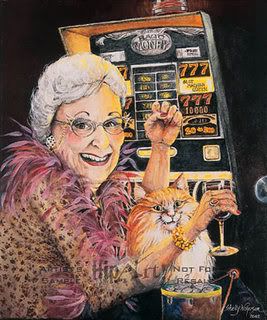By Martha Reed
One of the secret treats of my summer is to go out for a preliminary walk first thing on Sunday morning while my coffee is brewing and the day is still fresh. The mist is rising off the Allegheny River and sometimes there are some pretty amazing colors – peach, pink, even baby blue – up in the sky.
Aspinwall hosts a flea market and farm to market produce stand in our local municipal parking lot on Sundays and it’s a very entertaining event. A lot of retired people show up to see what’s going on, it’s like a party; everyone knows each other and the vendors are standing around, gossiping. I’ve picked up some pretty nice vintage lace for curtains down there and the tomatoes and fresh picked corn can’t be beat.
Before I leave the flea market I have to wander past the bookseller. He’s a long-haired groovy dude who looks a lot like one of my uncles and he sells hardback books for a dollar. I’ve found a couple of first edition mysteries in his stacks and even with a TBR pile that is threatening to topple over every time someone opens my front door, I can’t say no to a book for a buck so I end up buying more and taking them home.
Last Sunday I got all intellectual and bought
Selected Poems by Lord Byron. I seemed to have missed the Regency period in my study of English Literature (Capital E, Capital L) so I thought it wouldn’t hurt me to actually force myself to read this one. The funny thing is that once I slowed down enough to translate 19th century syntax, I actually enjoyed it.
The first thing was I knew he was a Lord, a British peer. I had already picked up that much. I also knew he was a bad boy because my grandfather nicknamed one of my childhood associates ‘Lord Byron’ (his real name was Will) and I was smart enough even at twelve years old to draw the obvious inference. What I didn’t know was that Lord Byron was writing and struggling to make a living at it. His poem
Don Juan was pre-sold by subscription:
From CANTO 221
But for the present, gentle reader! and
Still gentler purchaser! The bard – that’s I –
Must, with permission, shake you by the hand,
And so your humble servant, and goodbye!
We meet again, if we should understand
Each other; and if not, I shall not try
Your patience further than by this short sample –
“Twere well if others follow’d my example.
I have to put just a bit in here about how really bad George Gordon was. Nowadays we are such “well regulated creatures” that we haven’t had a bad boy Rock’n’Roll star lately. I think Lord B qualified:
“On April 15, 1816, to escape scandal, Byron left England. For the rest of his life his wondered the Continent in self-imposed exile. In Geneva he began a friendship with Percy Shelly, who was there with his wife Mary Godwin (
Frankenstein). There, too, he finished the third canto of
Childe Harold’s Pilgrimage and had a brief affair with another ardent and aggressive admirer, Claire Clairmont, Mary’s half-sister. A daughter, Allegra, was born of this liaison.
Byron then moved on to Venice to perhaps his most debauched period as well as the beginning of his most creatively productive; in Italy he finished the fourth canto of Childe Harold’s Pilgrimage, wrote
The Vision of Judgement (1822) and the sixteen cantos of Don Juan, considered to be his best and most mature works. In addition to his various semi-permanent mistresses, he kept in his rented palazzo an ever changing harem of Venetian women; by Byron’s own count there were more than two hundred.”
Introduction - Christopher Moore
I’ve tried to imagine the life going on in that Venetian palazzo. It must have been a constant uproar of wife, mistresses, children, servants, mistresses, vendors, priests, English visitors, and dogs. Now I don’t need dead silence to work but I do need relative calm. It’s any wonder he found the time to write!
This last bit is what made me decide the book was worth a dollar. I imagined L.B. locked in an upper room, above all the turmoil going on downstairs and out on the Venetian canals, the noise, the singing, barking, laughing, loving, living distractions, with him sitting at a desk knowing that he needs to pop out a couple more stanzas for those loyal subscribers back home who will then send him enough cash to keep the whole extravagant circus afloat. He settles in, takes a big sigh, braces his shoulders for the task ahead and:
From CANTO III
Hail, Muse! Et cetera –
- George Gordon, Lord Byron











